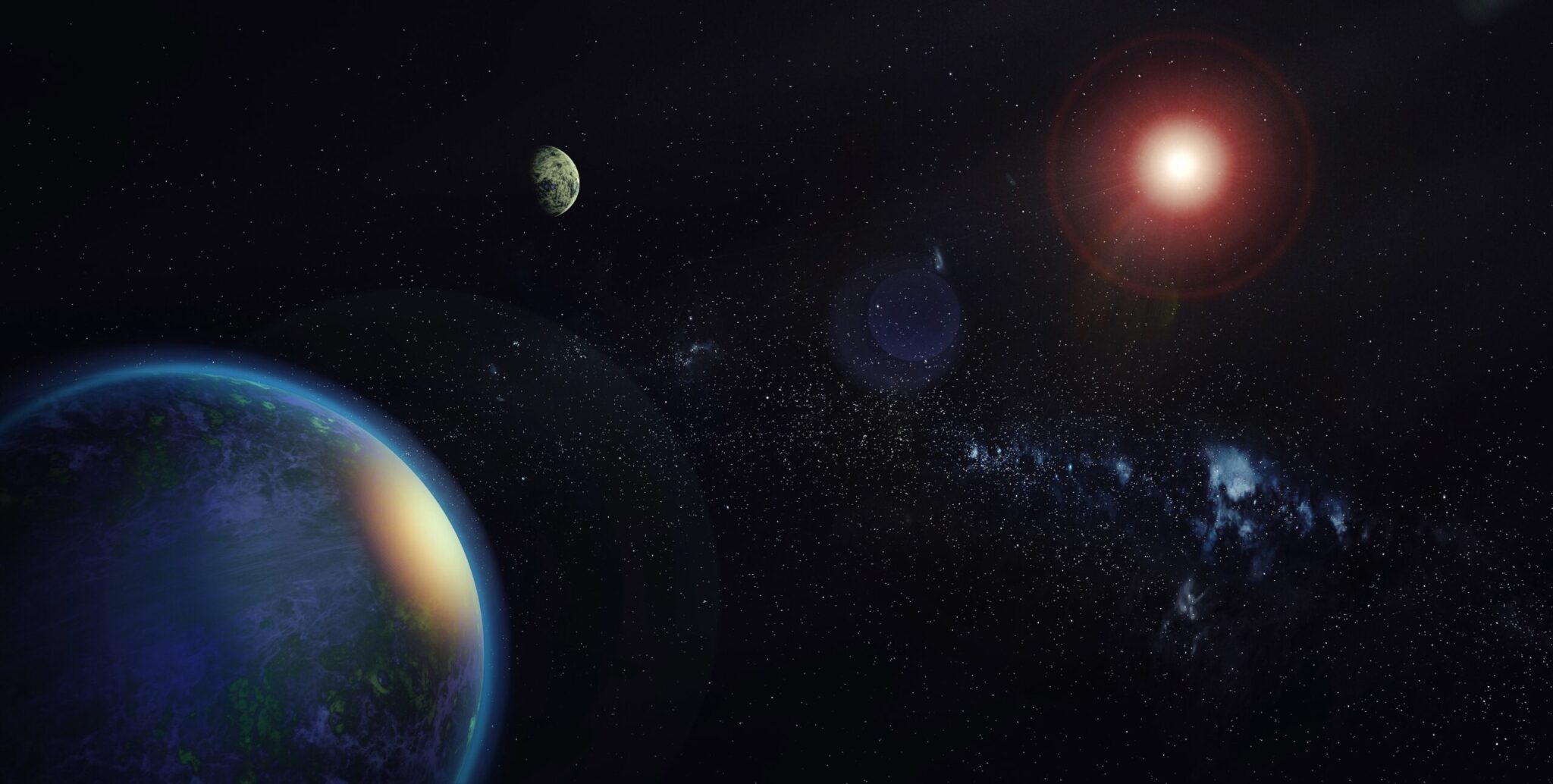An international team of astronomers discovers two potentially habitable exo-earths orbiting a nearby star

Both Earth-mass planets orbit the star GJ 1002, a red dwarf, and are excellent candidates for atmospheric characterization
Two Earth-mass planets orbiting a red dwarf—the star called GJ 1002—, have been found recently by an international team of astronomers. The study is led by researchers from the Instituto de Astrofísica de Canarias (IAC) and has the participation of members of the Institute of Space Studies of Catalonia (IEEC — Institut d’Estudis Espacials de Catalunya). The article has been accepted for publication in the journal Astronomy & Astrophysics.
The new planets orbit the nearby star GJ 1002, located less than 16 light years away from the solar system. Both have masses like the Earth and are located within the habitable zone of their star. As the star is quite cool, the habitable zone of the system is very close to it. The inner planet, GJ 1002 b, takes just 10 days to complete a full orbit. The other one, GJ 1002 c, needs 21 days.
This discovery has only been possible thanks to the collaboration between the ESPRESSO [1] and CARMENES [2] consortia, both devoted to the search of exoplanets. The star GJ 1002 was observed by the CARMENES instrument at the Calar Alto Observatory between 2017 and 2019, and later between 2019 and 2021 by the ESPRESSO instrument at the Paranal Observatory.

Caption: The infographic compares the planet positions, scaled to the habitability zone, with those of the Solar System.
Credits: Alejandro Suárez Mascareño (with resources from NASA).
“Nature seems determined to prove that Earth-like exoplanets are very common. With these two, we already know about 7 of them in nearby systems”, explains Alejandro Suárez Mascareño, researcher at the IAC and lead author of the study.
The closeness of the star to our solar system makes the planets around GJ 1002 excellent candidates for atmospheric characterization by studying their reflected light or thermal emission.
“These will be prime targets for future space missions such as LIFE, currently in concept phase and with the participation of the IEEC, which will be able to detect key molecules in their atmospheres and study the presence of a biosphere”, explains Ignasi Ribas, an IEEC researcher at the Institute of Space Sciences (ICE – CSIC).
Due to its cool temperature, GJ 1002 is too faint in visible light to study its radial velocity variations with most spectrographs. The design of CARMENES, much redder than most other spectrographs focused on radial velocities, made it possible to study it with the 3.5-m Calar Alto telescope. The combination of ESPRESSO and the collecting power of the 8-m VLT telescopes made it possible to obtain radial velocity measurements with a precision of 30 cm/s, out of reach for almost any other facility in the world.
Press release prepared in collaboration with the Communication Office of the Instituto de Astrofísica de Canarias (IAC).
Notes
[1] ESPRESSO (Echelle Spectrograph for Rocky Exoplanet and Stable Spectroscopic Observations) is a third-generation, fibre fed, cross-dispersed, echelle spectrograph mounted on the European Southern Observatory's Very Large Telescope (VLT). ESPRESSO is being developed by a consortium consisting of the European Southern Observatory (ESO) and seven European scientific institutes.
[2] The CARMENES (Calar Alto high-Resolution search for M dwarfs with Exo-earths with Near-infrared and optical Échelle Spectrographs) instrument is a high-resolution optical and near infrared spectrograph built in collaboration by various Spanish and German research institutions, and it is operated by the Calar Alto Observatory (Spain).
Main Image
Caption: Representation of an exoplanet around its red dwarf.
Credits: Alejandro Suárez Mascareño (IAC) and Inés Bonet Marquez (IAC).
Links
– IEEC
– IAC
– CARMENES
– ESPRESSO
More information
This research is presented in a paper entitled “Two temperate Earth-mass planets orbiting the nearby star GJ 1002” by A. Suárez Mascareño et al., appeared in the journal Astronomy & Astrophysics on 15 December 2022.
The Institute of Space Studies of Catalonia (IEEC — Institut d’Estudis Espacials de Catalunya) promotes and coordinates space research and technology development in Catalonia for the benefit of society. IEEC fosters collaborations both locally and worldwide and is an efficient agent of knowledge, innovation and technology transfer. As a result of 25 years of high-quality research, done in collaboration with major international organisations, IEEC ranks among the best international research centres, focusing on areas such as: astrophysics, cosmology, planetary science, and Earth Observation. IEEC’s engineering division develops instrumentation for ground- and space-based projects, and has extensive experience in working with private or public organisations from the aerospace and other innovation sectors.
IEEC is a private non-profit foundation, governed by a Board of Trustees composed of Generalitat de Catalunya and four other institutions that each have a research unit, which together constitute the core of IEEC R&D activity: the Universitat de Barcelona (UB) with the research unit ICCUB — Institute of Cosmos Sciences; the Universitat Autònoma de Barcelona (UAB) with the research unit CERES — Center of Space Studies and Research; the Universitat Politècnica de Catalunya · BarcelonaTech (UPC) with the research unit CTE — Research Group in Space Sciences and Technologies; the Spanish Research Council (CSIC) with the research unit ICE — Institute of Space Sciences. The IEEC is a CERCA (Centres de Recerca de Catalunya) centre.
Contacts
IEEC Communication Office
Barcelona, Spain
E-mail: comunicacio@ieec.cat
Lead Researcher at IEEC
Barcelona, Spain
Ignasi Ribas
Institute of Space Studies of Catalonia (IEEC)
Institute of Space Sciences (ICE – CSIC)
E-mail: ribas@ieec.cat, iribas@ice.cat
